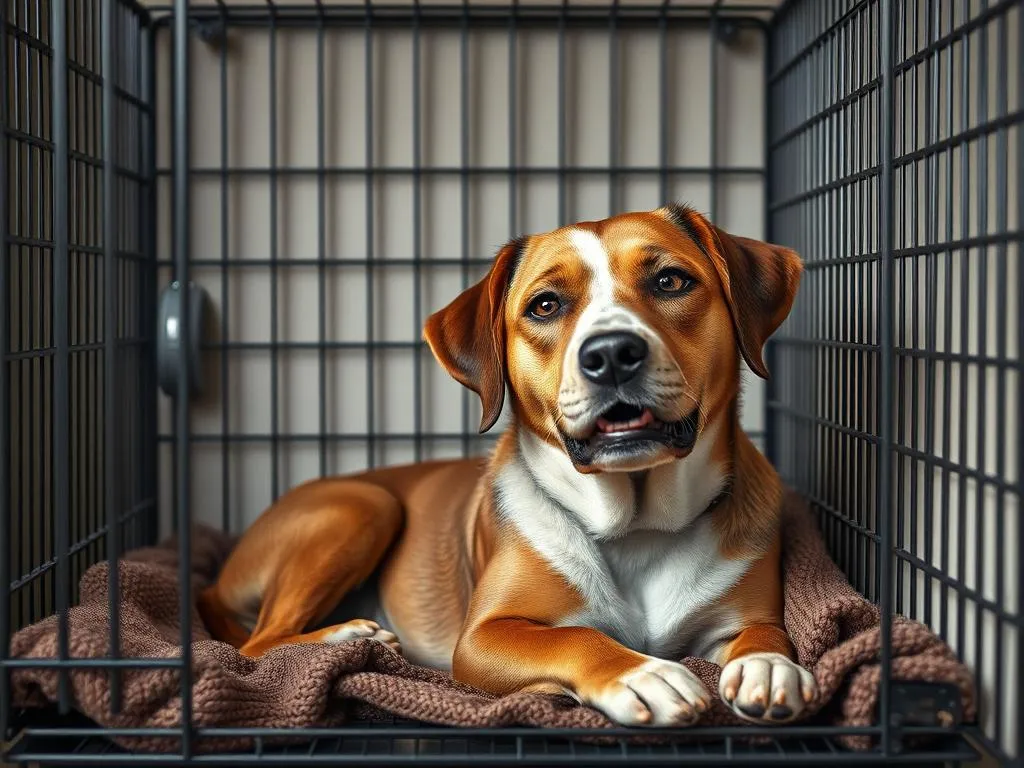
Introduction
Dog crates are an essential tool in pet care, providing a safe and comfortable environment for our furry friends. Whether you’re using a crate for training, travel, or simply as a cozy space for your dog to relax, understanding what to put in a dog crate is crucial for their well-being. A well-equipped crate can help alleviate anxiety, encourage good behavior, and create a familiar retreat for your dog.
In this article, we will explore the essential items to include in a dog crate, discuss the benefits of proper crate setup, and provide tips for effective crate use. By the end of this guide, you’ll be equipped with the knowledge you need to create a welcoming space for your beloved pet.
Understanding the Purpose of a Dog Crate
Safety and Security
One of the primary functions of a dog crate is to offer a safe space for your dog. Crates can prevent unwanted behaviors, such as chewing on furniture or getting into dangerous situations when you’re not around. By introducing your dog to a crate, you’re providing them with a secure environment where they can feel safe.
Crate training is essential for dogs, as it helps them learn boundaries and develop a sense of security. A well-trained dog will see their crate as a personal sanctuary rather than a place of punishment, which is crucial for their mental health.
Comfort and Familiarity
Crates can also play a significant role in creating a cozy environment for your dog. By adding familiar items, such as bedding and toys, you can help them associate their crate with comfort and relaxation. This familiarity can be especially beneficial during stressful situations, such as thunderstorms or fireworks.
To help your dog develop a positive relationship with their crate, it’s essential to encourage them to spend time in it voluntarily. Using treats or praise can facilitate this process, making the crate a place of comfort rather than confinement.
Travel and Transportation
Using a crate for travel is another important consideration. A crate can significantly enhance your dog’s safety while on the road, preventing distractions and potential injuries. If your dog is used to their crate, they will feel more at ease during travel, making the entire experience smoother for both of you.
Crate training is particularly beneficial for trips, as dogs often feel more secure in their designated space. Familiar items can make the crate feel like home, reducing anxiety during travel.
Essential Items to Include in a Dog Crate
Bedding
The first essential item to include in a dog crate is bedding. A comfortable bed or blanket can provide warmth and cushioning, making the crate a cozy retreat for your dog. When selecting bedding materials, consider the following options:
- Dog Beds: A soft, cushioned dog bed fits perfectly in the crate, providing a designated sleeping area.
- Blankets: Fleece or cotton blankets can be an excellent option for added comfort, especially for dogs who like to burrow.
When choosing bedding, size matters. Make sure the bedding is appropriate for your dog’s breed; larger dogs may require thicker cushioning, while smaller breeds may prefer softer, less bulky options.
Toys
Another critical element for your dog’s crate is toys. Including toys can help keep your dog entertained and mentally stimulated while they are inside. Here are some recommended types of toys:
- Chew Toys: Durable chew toys can help satisfy your dog’s natural chewing instincts while promoting dental health.
- Plush Toys: Soft, plush toys can provide comfort and companionship, especially for anxious dogs.
- Interactive Toys: Puzzle toys or treat-dispensing toys can engage your dog mentally, providing them with a fun challenge.
Having a variety of toys in the crate can help alleviate boredom and encourage your dog to enjoy their time inside.
Water and Food Bowls
While it’s not always necessary to keep food and water bowls in the crate, there are situations where they may be helpful. If your dog will be crated for an extended period, consider the following options:
- Spill-Proof Bowls: Look for bowls designed to prevent spills, ensuring that your dog has access to water without making a mess.
- Bowl Placement: If you choose to include bowls, position them securely in the crate to prevent tipping.
Always monitor your dog’s intake and ensure they are comfortable during crate time.
Comfort Items
In addition to bedding and toys, consider adding comfort items that can help soothe your dog. Familiar blankets or clothing with your scent can create a calming atmosphere. Scent is a powerful comfort tool for dogs, providing them with a sense of familiarity and security.
Safety Items
Safety should be a top priority when setting up your dog’s crate. Here are some safety items to consider:
- Crate Pads: Using non-slip crate pads can help prevent accidents and provide added comfort.
- Harnesses or Seatbelts: If you’re transporting your dog, consider using harnesses or seatbelts designed for crate use to ensure their safety during travel.
Additional Considerations When Setting Up a Dog Crate
Size and Space
Choosing the right crate size is crucial for your dog’s comfort. A crate should be spacious enough for your dog to stand, turn around, and lie down comfortably but not so large that it becomes a play area. Measure your dog and select a crate that fits their size, considering their breed and growth stage.
When arranging items in the crate, prioritize comfort. Place bedding at the bottom for cushioning, and arrange toys and comfort items within easy reach.
Temperature Control
Temperature control is an essential consideration when setting up a dog crate. Keeping your dog comfortable in different weather conditions can significantly affect their crate experience. Here are some tips:
- Summer: Position the crate in a cool area away from direct sunlight. Consider using a fan or cooling mat to keep your dog comfortable.
- Winter: Ensure the crate is in a warm spot and use blankets to provide insulation.
Monitoring your dog’s comfort level and adjusting the crate’s position accordingly is crucial for their well-being.
Duration of Crate Time
Understanding how long your dog can comfortably stay in their crate is vital. The recommended time limits can vary by age, breed, and individual temperament. Generally, adult dogs can be crated for up to 6-8 hours, while puppies may need shorter intervals.
Be observant of your dog’s behavior. Signs of discomfort or anxiety, such as whining, barking, or destructive behavior, can indicate that they need more frequent breaks or additional comfort items.
Benefits of Proper Crate Setup
Reducing Anxiety
A well-equipped crate can be a sanctuary for anxious dogs. By providing comfort items, toys, and familiar scents, you can help soothe their nerves. Implementing gradual crate training techniques can also minimize stress, allowing your dog to become accustomed to their crate at their own pace.
Encouraging Good Behavior
Proper crate setup can encourage good behavior in your dog. A crate provides a safe space for them to relax, reducing the likelihood of destructive behavior caused by boredom or anxiety. Additionally, crate training can help with housebreaking, as dogs naturally avoid soiling their sleeping area.
Creating a Safe Space
Crates serve as a designated area for dogs, particularly in multi-pet households. This creates a sense of security for your dog, allowing them to retreat when they need a break. Balancing crate time with free roaming ensures that your dog feels secure without feeling confined.
Common Mistakes to Avoid
Overcrating
One of the most significant mistakes dog owners make is overcrating. Leaving a dog in a crate for too long can lead to anxiety, stress, and behavioral issues. It’s essential to establish a crate schedule that accommodates your dog’s needs, providing ample time for exercise, play, and socialization outside of the crate.
Inadequate Comfort
Avoid creating an uncomfortable environment within the crate. Harsh surfaces, inadequate bedding, or extreme temperatures can lead to distress. Regularly clean the crate and check for any worn or damaged items to maintain a hygienic and comfortable space for your dog.
Neglecting Training
Failing to properly train your dog for crate use can lead to negative associations. Gradually introducing your dog to their crate and using positive reinforcement can help them view the crate as a safe haven rather than a punishment. Consistency and patience during this process are key to success.
Conclusion
In summary, understanding what to put in a dog crate is essential for your dog’s comfort, safety, and overall well-being. By including bedding, toys, comfort items, and safety measures in your crate setup, you can create a welcoming environment for your furry friend.
Remember to consider your dog’s individual needs, monitor their behavior, and adjust the crate setup as necessary. With thoughtful planning and preparation, a dog crate can serve as a valuable tool in your pet care routine, providing your dog with a secure and cozy retreat for years to come. Experiment with different items and configurations to find what works best for your unique pup, and enjoy the bond that develops through positive crate experiences.









